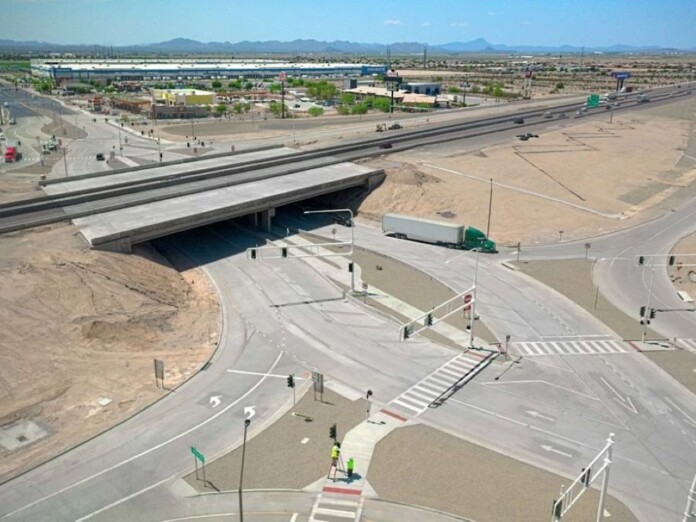
The Arizona Department of Transportation, which is studying methods for improving traffic flow at the State Route 347/Interstate 10 interchange, is proposing a diverging-diamond interchange.
The decision would have a huge impact on Maricopans, especially those who commute to the Valley daily for work, when morning and afternoon rush-hour traffic backups can be painfully slow.
According to ADOT, with a diverging-diamond interchange both directions of traffic on the non-freeway road cross the freeway just as they do with a conventional interchange. What is unusual, though, is that traffic on the freeway overpass (or underpass) is briefly directed to the opposite side of the road. The crossover “X” sections can be managed with traffic lights or one-side overpasses to travel above the opposite lanes without stopping, the latter allowing nonstop traffic flow when traffic is sparse.
According to ADOT, diverging diamond interchanges offer several advantages:
- Greater safety, smoother operation and lower cost.
- Reduction of and severity of crashes while reducing traffic congestion.
- Handling heavy traffic that is making turns better than conventional interchanges.
- Ability to construct the interchange within a smaller footprint and lower cost by re-using the existing bridge.
- Lesser impact on the area during construction.
According to ADOT’s draft-design concept report, most of the improvements to the interchange would be concentrated on the SR 347/Queen Creek Road alignment, including reconfiguring the crossroad approaches to the interchange, reconstructing ramp terminals, reversing the flow between the ramp terminals, using the existing bridge for eastbound traffic and constructing a new adjacent bridge to the south for westbound traffic.
The report indicates horizontal alignment of SR 347/Queen Creek Road would be split in two: one alignment for each direction of traffic. The horizontal alignments for the ramps would be shifted farther outward to tie into the new configuration. The vertical alignment for eastbound traffic would match the existing road as closely as possible over the existing bridge to allow for its continued use.
The new configuration would have four eastbound lanes across the existing bridge and three westbound lanes across the new bridge as well as 10-foot shoulders across both bridges. A 5-foot bike lane would be provided for both directions.
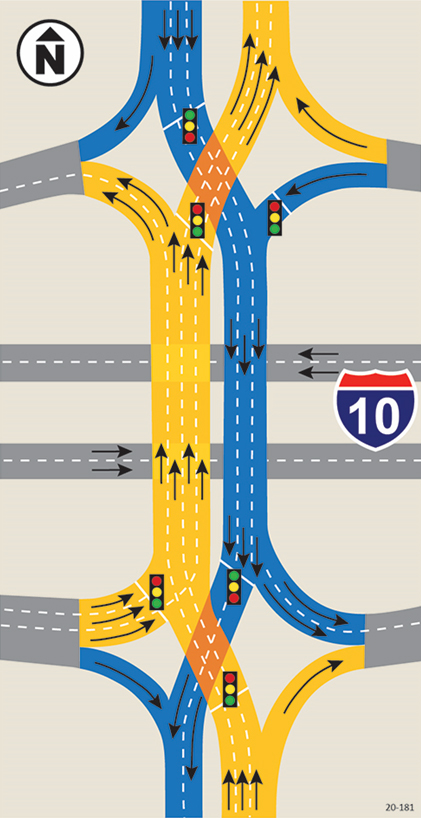
The new bridge, to be constructed south of the existing bridge, would be 60 feet wide with minimum vertical clearance over I-10 of 16.5 feet. The existing bridge would remain with no structural modifications but would receive minor deck work, including raised curbing, barriers and other elements to add the sidewalks.
The upgrade would require ADOT to acquire 4.4 acres of rights of way and easements split among all four quadrants of the interchange. Of those, 2.2 acres of new easements would be acquired from tribal land and the remaining 2.2 acres would come from at least three allotted parcels.
The report says the diverging diamond interchange would improve left-turn movement onto I-10 from Maricopa toward Phoenix as well as improving southbound exit-ramp movement toward Maricopa. Those would significantly raise the expected level of service in the peak morning and afternoon periods.
The new bridge and nearly half of the new interchange would be built entirely offline, the report says, thereby minimizing traffic disruptions. Traffic shifts and multiple phases would, however, be necessary to complete the asphalt and concrete paving and signal systems necessary to put the new crossover intersections into service.
Some short-term lane closures and detours would be necessary, including on I-10 for the new bridge construction. That would likely be done by rerouting I-10 traffic through the existing interchange ramp terminals. Advance traffic-control notification to the public would be needed prior to implementing restrictions, closures or major traffic-control changes.
To view a video of how the interchange would work, click here: https://www.youtube.com/watch?v=vrSIVeBPWZg.



![Shred-A-Thon to take place tomorrow An image of shredded paper. [Pixabay]](https://www.inmaricopa.com/wp-content/uploads/2024/03/shredded-paper-168650_1280-218x150.jpg)
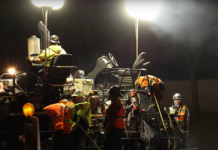
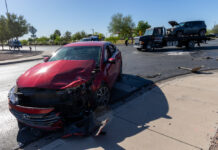

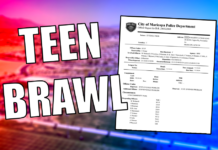








![Shred-A-Thon to take place tomorrow An image of shredded paper. [Pixabay]](https://www.inmaricopa.com/wp-content/uploads/2024/03/shredded-paper-168650_1280-100x70.jpg)
